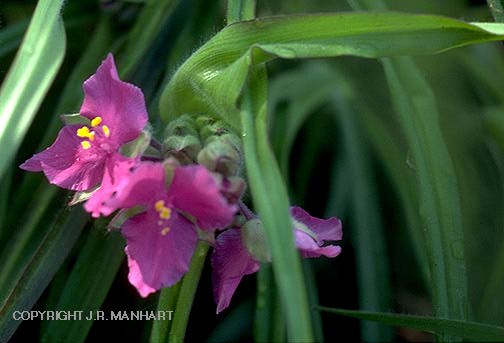

Ecological Species Groups of the Forest Lake Club
Vegetation is an important component of landscape ecosystems. However, we never deal just with plants, but always and necessarily with ecological systems, of which plants are a notable part. To distinguish and map the local landscape ecosystem types of FLC we used as much of the total vegetative complement as possible--overstory, understory, and ground-cover layers; trees, shrubs, vines, herbs, and mosses. Because of the enormous human disturbances of logging and fire exclusion, the overstory vegetation is not as useful in distinguishing ecosystems here as in old-growth forests that are in a near-natural state. Therefore, the ground-cover layer, particularly herbaceous species, is by far the most important vegetative layer in identifying and mapping landscape ecosystems.
The great indicator value of the groundflora in distinguishing forest sites and assessing their productivity has been recognized for many years. Plants integrate many important environmental factors that are difficult to measure directly. Furthermore, herbs often have narrower tolerance ranges to moisture, nutrient, and light conditions than trees and shrubs. The use of plants as phytometers, however, is not without limitations. One of these is that the use of a single indicator plant or a few indicators may give misleading results or the indicator species may be absent from the sample by chance. This problem is mitigated by using many indicator plants and developing groups (as much as is possible) whose species have similar ecological requirements and therefore indicate a specific range of site conditions. Based on experience throughout FLC lands and careful attention to the soils and physiographic features where each species occurs, we subjectively arranged ground-cover species into ecological species groups based on their environmental tolerances. In most cases, several to many species form the group; it is named by the most representative species of the group. Each species group is indicative of a particular range of soil moisture, fertility, acidity, and light intensity. The presence and abundance of these groups are used together with physiography, soil, and trees and shrubs of the understory and overstory to distinguish and map the ecosystem types of the property.
Click here to see the Ecological Species Groups
Click here to return to main page.